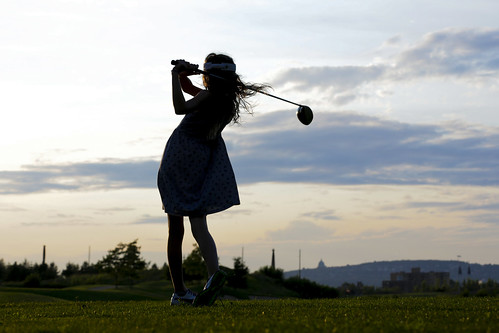H spinal cord injury. Having said that, Faist et al. demonstrated that paraplegics with unilateral cerebral injury usually do not exhibit lowered presynaptic Ia inhibition in soleus muscle tissues. Lamy et al. also reported that while the impairment of presynaptic Ia inhibition in patients with stroke behaved similarly within the upper and decrease limbs, lowered presynaptic Ia inhibition was extra marked at cervical rather than at lumber segments. Within the present study, we investigated the number of vGluT1-positive boutons in monosynaptic connections with motoneurons and observed an increased variety PubMed ID:http://jpet.aspetjournals.org/content/130/1/59 of projections from Ia afferent fibers immediately after stroke. VGluT1-positive fibers in the spinal cord are thought to belong mainly to corticospinal and reticulospinal tracts, and Ia, II, and Ib fibers. These several Eglumetad biological activity tracts and fibers project to diverse places in Rexed laminae. VGluT1-positive corticospinal and reticulospinal tracts project towards the dorsal horn and laminae VII with the medial ventral horn, respectively. Other myelinated vGluT1-positive fibers that project to laminae III-VI are thought to become cutaneous myelinated afferents. In addition, Ia afferent fibers project to laminae VII and IX and connect to motoneurons. Thus, earlier research investigated the amount of vGluT1-positive boutons connecting to motoneurons as a strategy to count Ia afferent fibers. We identified that vGluT1positive boutons on the affected side had been significantly increased 7 and 42 d poststroke when compared with sham-operated animals. In addition, these enhanced Ia afferent boutons have been excitatory synapses, suggesting that the input from Ia fibers to motoneurons was amplified. We recommend that this raise in Ia boutons is a chronic adjust, characteristic of spasticity in the cellular level. Moreover, we suggest that this may be a maladaptive form of plasticity that leads to improvement of spasticity following stroke. Within this study, transient KCC2 downregulation and dephosphorylation of S940 in KCC2 was detected within the early phase post-stroke. We also observed a rise inside the variety of vGluT1 boutons till 42 d post-stroke. We speculate that KCC2 expression adjustments may perhaps serve as a trigger of spasticity just after stroke, and that other mechanisms of spasticity might exist in stroke. In the event the increased Ia boutons that connect to motoneurons are also functional, then it might be expected that the spinal reflex could  be hyper-excitable. Thus, axon sprouting and a rise of Ia boutons could trigger chronic spasticity following stroke. The results of your present study recommend that in the motor region post-stroke, there seems to be a reduce in KCC2 expression within the plasma membrane of motoneurons and elevated projections of Ia afferent fibers to motoneurons. Moreover, this raise in Ia fibers may very well be accountable for the expression of chronic phase spasticity after stroke. Research for example they are crucial considering the fact that a greater understanding of your mechanisms of spasticity could help in the improvement of a lot more helpful remedies to promote functional recovery after stroke. 15 / 18 Post-Stroke Downregulation of KCC2 in Motoneurons Fungal keratitis is usually a sight-threatening ocular disease with a increasing incidence, especially in creating countries. The pathogens underlying fungal keratitis are varied due to variations in climates and financial environments. In China, the most frequent pathogens are Fusarium solani and Aspergillus fumigatus. The immune Brivanib response to these infectious microorganisms involves both adaptive immunity and inna.H spinal cord injury. On the other hand, Faist et al. demonstrated that paraplegics with unilateral cerebral injury usually do not exhibit lowered presynaptic Ia inhibition in soleus muscles. Lamy et al. also reported that even though the impairment of presynaptic Ia inhibition in individuals with stroke behaved similarly in the upper and reduced limbs, lowered presynaptic Ia inhibition was additional marked at cervical as opposed to at lumber segments. In the current study, we investigated the amount of vGluT1-positive boutons in monosynaptic connections with motoneurons and observed an increased number of projections from Ia afferent fibers right after stroke. VGluT1-positive fibers inside the spinal cord are thought to belong primarily to corticospinal and reticulospinal tracts, and Ia, II, and Ib fibers. These various tracts and fibers project to distinctive locations in Rexed laminae. VGluT1-positive corticospinal and reticulospinal tracts project for the dorsal horn and laminae VII with the medial ventral horn, respectively. Other myelinated vGluT1-positive fibers that project to laminae III-VI are thought to become cutaneous myelinated afferents. Moreover, Ia afferent fibers project to laminae VII and IX and connect to motoneurons. Thus, previous research investigated the number of vGluT1-positive boutons connecting to motoneurons as a method to count Ia afferent fibers. We found that vGluT1positive boutons on the impacted side have been considerably enhanced 7 and 42 d poststroke in comparison with sham-operated animals. In addition, these enhanced Ia afferent boutons were excitatory synapses, suggesting that the input from Ia fibers to motoneurons was amplified. We suggest that this raise in Ia boutons can be a chronic transform, characteristic of spasticity at the cellular level. Furthermore, we recommend that this can be a maladaptive type of plasticity that results in improvement of spasticity after stroke. Within this study, transient KCC2 downregulation
be hyper-excitable. Thus, axon sprouting and a rise of Ia boutons could trigger chronic spasticity following stroke. The results of your present study recommend that in the motor region post-stroke, there seems to be a reduce in KCC2 expression within the plasma membrane of motoneurons and elevated projections of Ia afferent fibers to motoneurons. Moreover, this raise in Ia fibers may very well be accountable for the expression of chronic phase spasticity after stroke. Research for example they are crucial considering the fact that a greater understanding of your mechanisms of spasticity could help in the improvement of a lot more helpful remedies to promote functional recovery after stroke. 15 / 18 Post-Stroke Downregulation of KCC2 in Motoneurons Fungal keratitis is usually a sight-threatening ocular disease with a increasing incidence, especially in creating countries. The pathogens underlying fungal keratitis are varied due to variations in climates and financial environments. In China, the most frequent pathogens are Fusarium solani and Aspergillus fumigatus. The immune Brivanib response to these infectious microorganisms involves both adaptive immunity and inna.H spinal cord injury. On the other hand, Faist et al. demonstrated that paraplegics with unilateral cerebral injury usually do not exhibit lowered presynaptic Ia inhibition in soleus muscles. Lamy et al. also reported that even though the impairment of presynaptic Ia inhibition in individuals with stroke behaved similarly in the upper and reduced limbs, lowered presynaptic Ia inhibition was additional marked at cervical as opposed to at lumber segments. In the current study, we investigated the amount of vGluT1-positive boutons in monosynaptic connections with motoneurons and observed an increased number of projections from Ia afferent fibers right after stroke. VGluT1-positive fibers inside the spinal cord are thought to belong primarily to corticospinal and reticulospinal tracts, and Ia, II, and Ib fibers. These various tracts and fibers project to distinctive locations in Rexed laminae. VGluT1-positive corticospinal and reticulospinal tracts project for the dorsal horn and laminae VII with the medial ventral horn, respectively. Other myelinated vGluT1-positive fibers that project to laminae III-VI are thought to become cutaneous myelinated afferents. Moreover, Ia afferent fibers project to laminae VII and IX and connect to motoneurons. Thus, previous research investigated the number of vGluT1-positive boutons connecting to motoneurons as a method to count Ia afferent fibers. We found that vGluT1positive boutons on the impacted side have been considerably enhanced 7 and 42 d poststroke in comparison with sham-operated animals. In addition, these enhanced Ia afferent boutons were excitatory synapses, suggesting that the input from Ia fibers to motoneurons was amplified. We suggest that this raise in Ia boutons can be a chronic transform, characteristic of spasticity at the cellular level. Furthermore, we recommend that this can be a maladaptive type of plasticity that results in improvement of spasticity after stroke. Within this study, transient KCC2 downregulation  and dephosphorylation of S940 in KCC2 was detected within the early phase post-stroke. We also observed a rise within the quantity of vGluT1 boutons till 42 d post-stroke. We speculate that KCC2 expression changes might serve as a trigger of spasticity right after stroke, and that other mechanisms of spasticity may perhaps exist in stroke. If the increased Ia boutons that connect to motoneurons are also functional, then it may be anticipated that the spinal reflex could be hyper-excitable. As a result, axon sprouting and a rise of Ia boutons could trigger chronic spasticity after stroke. The outcomes in the present study recommend that inside the motor region post-stroke, there appears to become a lower in KCC2 expression within the plasma membrane of motoneurons and improved projections of Ia afferent fibers to motoneurons. Moreover, this increase in Ia fibers can be accountable for the expression of chronic phase spasticity after stroke. Research such as they are important given that a improved understanding in the mechanisms of spasticity could help within the improvement of far more helpful treatment options to market functional recovery just after stroke. 15 / 18 Post-Stroke Downregulation of KCC2 in Motoneurons Fungal keratitis is usually a sight-threatening ocular disease having a increasing incidence, in particular in establishing countries. The pathogens underlying fungal keratitis are varied on account of differences in climates and economic environments. In China, the most prevalent pathogens are Fusarium solani and Aspergillus fumigatus. The immune response to these infectious microorganisms incorporates both adaptive immunity and inna.
and dephosphorylation of S940 in KCC2 was detected within the early phase post-stroke. We also observed a rise within the quantity of vGluT1 boutons till 42 d post-stroke. We speculate that KCC2 expression changes might serve as a trigger of spasticity right after stroke, and that other mechanisms of spasticity may perhaps exist in stroke. If the increased Ia boutons that connect to motoneurons are also functional, then it may be anticipated that the spinal reflex could be hyper-excitable. As a result, axon sprouting and a rise of Ia boutons could trigger chronic spasticity after stroke. The outcomes in the present study recommend that inside the motor region post-stroke, there appears to become a lower in KCC2 expression within the plasma membrane of motoneurons and improved projections of Ia afferent fibers to motoneurons. Moreover, this increase in Ia fibers can be accountable for the expression of chronic phase spasticity after stroke. Research such as they are important given that a improved understanding in the mechanisms of spasticity could help within the improvement of far more helpful treatment options to market functional recovery just after stroke. 15 / 18 Post-Stroke Downregulation of KCC2 in Motoneurons Fungal keratitis is usually a sight-threatening ocular disease having a increasing incidence, in particular in establishing countries. The pathogens underlying fungal keratitis are varied on account of differences in climates and economic environments. In China, the most prevalent pathogens are Fusarium solani and Aspergillus fumigatus. The immune response to these infectious microorganisms incorporates both adaptive immunity and inna.
Calcimimetic agent
Just another WordPress site
